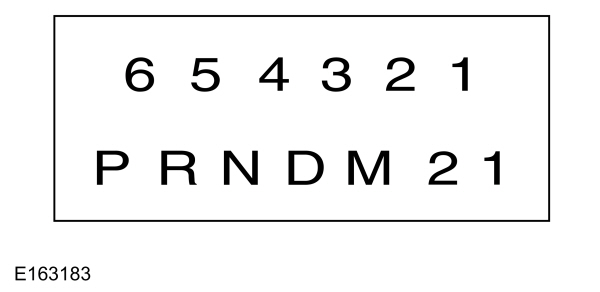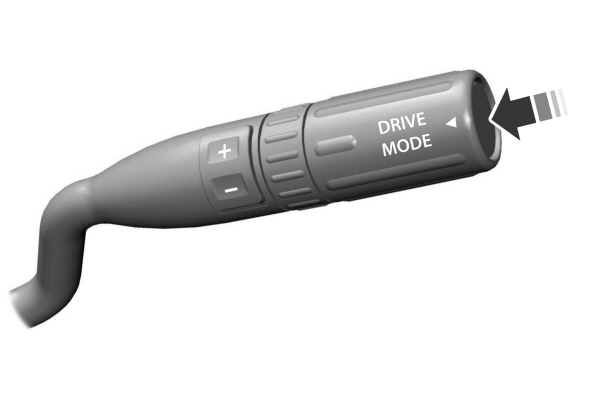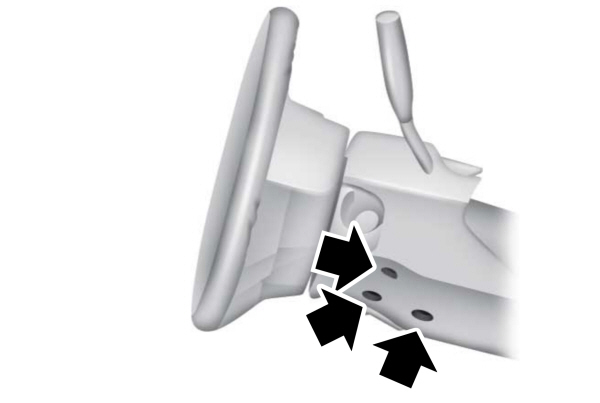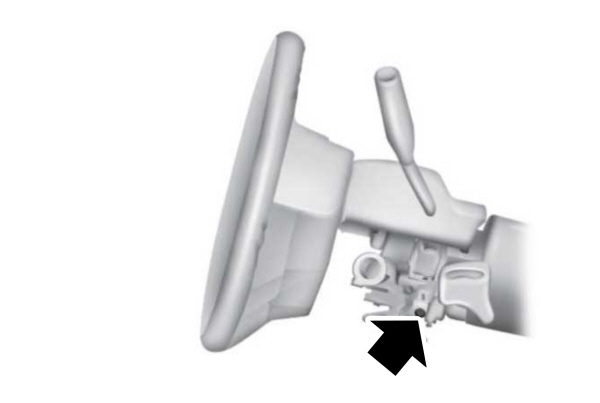This view of the Owner's Manual contains the very latest information, which may vary slightly from the printed Owner's Manual originally provided with your vehicle. It may also describe content that is not on or operates differently on your vehicle. Please consider the Owner's Manual originally provided with your vehicle as the primary source of information for your vehicle.

The information contained in this publication was correct at the time of release.In the interest of continuous development, we reserve the right to change specifications, design or equipment at any time without notice or obligation.No part of this publication may be reproduced, transmitted, stored in a retrieval system or translated into any language in any form by any means without our written permission.Errors and omissions excepted.
Copyright © 2024 Ford Motor Company
Automatic Transmission






 WARNING:
Apply the parking brake, shift into park (P), switch the ignition off and remove the key before you leave your vehicle. Failure to follow this instruction could result in personal injury or death.
WARNING:
Apply the parking brake, shift into park (P), switch the ignition off and remove the key before you leave your vehicle. Failure to follow this instruction could result in personal injury or death. WARNING:
When your vehicle is stationary, keep the brake pedal fully pressed when shifting gears. Failure to follow this instruction could result in personal injury, death or property damage.
WARNING:
When your vehicle is stationary, keep the brake pedal fully pressed when shifting gears. Failure to follow this instruction could result in personal injury, death or property damage. |
Note:
You may not be able to shift out of park (P) unless the intelligent access key is inside your vehicle.
Understanding the Shift Positions of Your Automatic Transmission (If Equipped)
6-Speed Transmissions

10-Speed Transmissions

Putting your vehicle in or out of gear:
- Fully press down the brake pedal.
- Move the gearshift lever into the preferred gear.
- When you have finished driving, come to a complete stop.
- Move the gearshift lever and securely latch it in park (P).
The instrument cluster displays the current gear.
Park (P)
This position locks the transmission and prevents the rear wheels from turning.
Reverse (R)
With the gearshift lever in reverse (R), your vehicle moves backward. Always come to a complete stop before shifting into and out of reverse (R).
Neutral (N)
With the gearshift lever in neutral (N), you can start your vehicle and it is free to roll. Hold the brake pedal down when in this position.
Drive (D)
Drive (D) is the normal driving position for the best fuel economy. The drive function allows automatic upshifts and downshifts through the full range of gears.
Manual (M)
With the gearshift lever in manual (M), the driver can change gears up or down as preferred. By moving the gearshift lever from drive position drive (D) to manual (M), you now have control of selecting the gear you prefer using buttons on the shift lever.
To return to the normal drive (D) position, move the shift lever from manual (M) to drive (D).
The transmission operates through the full range of gears.
Forced downshifts
- Allowed in drive (D) with the tow/haul feature on or off.
- Press the accelerator to the floor.
- Allows transmission to select an appropriate gear.
Understanding Your SelectShift Automatic™ Transmission

Note:
When pressing the button on the gearshift lever, you can cycle through the available drive modes. See
Drive Control.
Your vehicle has a SelectShift Automatic™ transmission gearshift lever. The SelectShift Automatic transmission gives you the ability to change gears up or down without a clutch.
To prevent the engine from running at too low of an RPM, which could cause it to stall, SelectShift will downshift if it determines that you have not downshifted in time.
SelectShift does not upshift, even if the engine is approaching the RPM limit. Shift it manually by pressing the + button.
Note:
Engine damage could occur if you maintain excessive engine revving without shifting.
The SelectShift Automatic transmission feature has two modes:
- Progressive Range Selection.
- Manual (M).
Progressive Range Selection - PRS

Progressive Range Selection gives you the ability to lock out gears from the automatic shifting range. This could provide you with an improved driving experience, for example, in slippery conditions or when experiencing a steep slope.
With the gearshift lever in drive (D), press the – button to active PRS. The instrument cluster indicates the available and selected gears.
All available gears display with the current gear indicated. Press the – button again to lock out gears beginning with the highest gear, for example, press the – button twice to lock out 6th and 5th gears. Only the available gears display, and the transmission shifts between the available gears. Press the + button to unlock gears to allow the transmission to shift to higher gears. The transmission shifts within the gear range you select.
Manual (M)
Moving the gearshift lever to the manual (M) position allows you to manually select the gear you prefer. Only the current gear displays. Use the buttons on the gearshift lever to manually select gears. Press the + button to upshift or the – button to downshift. Return the transmission to a different gearshift position to deactivate manual control.
Recommended shift speeds
Upshift according to the following chart:
| Upshifts when Accelerating (Recommended for Best Fuel Economy) | 6-Speed Transmissions |
|---|---|
| Shift from: | Gasoline Engines |
| 1 - 2 | 8 mph (13 km/h) |
| 2 - 3 | 16 mph (26 km/h) |
| 3 - 4 | 22 mph (35 km/h) |
| 4 - 5 | 35 mph (56 km/h) |
| 5 - 6 | 44 mph (71 km/h) |
| Upshifts when Accelerating (Recommended for Best Fuel Economy) 10-Speed | ||
|---|---|---|
| Shift from: | Gasoline engines | Diesel engines |
| 1 - 2 | 7 mph (11 km/h) | 10 mph (16 km/h) |
| 2 - 3 | 10 mph (16 km/h) | 15 mph (24 km/h) |
| 3 - 4 | 17 mph (27 km/h) | 19 mph (31 km/h) |
| 4 - 5 | 20 mph (32 km/h) | 22 mph (35 km/h) |
| 5 - 6 | 23 mph (37 km/h) | 25 mph (40 km/h) |
| 6 - 7 | 29 mph (47 km/h) | 31 mph (50 km/h) |
| 7 - 8 | 34 mph (55 km/h) | 36 mph (58 km/h) |
| 8 - 9 | 44 mph (71 km/h) | 45 mph (72 km/h) |
| 9 - 10 | 47 mph (76 km/h) | 49 mph (79 km/h) |
Automatic Transmission Adaptive Learning
This feature's design is to increase durability and provide consistent shift feel over the life of your vehicle. A new vehicle or transmission may have firm shifts, soft shifts or both. This operation is normal and does not affect function or durability of the transmission. Over time, the adaptive learning process fully updates transmission operation. Additionally, whenever you disconnect the battery or install a new battery, the system must relearn the strategy.
For F350, F450, F550 and F600 Chassis Cab Vehicles
Your transmission could reduce the load on the engine when the vehicle stops, and the gear selector is in drive (D) to reduce fuel consumption and emissions. The transmission resumes operation when you release the brake. This feature activates when the transmission is sufficiently warmed, and the vehicle is on a level slope.
Brake-Shift Interlock
 WARNING:
When doing this procedure, you need to take the transmission out of park (P) which means your vehicle can roll freely. To avoid unwanted vehicle movement, always fully apply the parking brake prior to doing this procedure. Use wheels chocks if appropriate.
WARNING:
When doing this procedure, you need to take the transmission out of park (P) which means your vehicle can roll freely. To avoid unwanted vehicle movement, always fully apply the parking brake prior to doing this procedure. Use wheels chocks if appropriate. WARNING:
If the parking brake is fully released, but the brake warning lamp remains illuminated, the brakes may not be working properly. Have your vehicle checked as soon as possible.
WARNING:
If the parking brake is fully released, but the brake warning lamp remains illuminated, the brakes may not be working properly. Have your vehicle checked as soon as possible. |
Note:
Do not drive your vehicle until you verify that the brake lamps are working.
Your vehicle comes with brake-shift interlock that prevents the gearshift lever from moving from park (P) when you switch the ignition on but have not pressed the brake pedal.
If you cannot move the gearshift lever out of the park (P) position when the ignition is on and the brake pedal pressed, a malfunction could have occurred. It is possible that a fuse has blown, or your vehicle’s brake lamps are not operating properly. See
Fuse Specification Chart.
If you do not have a blown fuse and the brake lamps are working properly, the following procedure allows you to move the gearshift lever from park (P):
- Apply the parking brake.Switch the ignition key to 1 - 0, then remove the key. See Starting and Stopping the Engine.
- Move the steering column to the full down and full rearward position, toward the driver seat.
- Remove the gearshift lever boot.
- Place your fingers into the hole where you removed the gearshift lever boot and pull the top half of the shroud up and forward to separate it from the lower half of the shroud. There is a hinge at the forward edge of the top shroud. Roll the top half of the shroud upward on the hinge point, then pull straight rearward toward the driver seat to remove.
- Remove the top half of the shroud.
- Remove the three fasteners under the column that secure the lower shroud half to the column.

- Pull the lock lever into the full unlocked position and remove the lower shroud cover by pulling the lever handle through the slot in the cover.
- Apply the brake. Gently lift the override disk and move the gearshift lever into neutral (N).

- Start your vehicle.
Perform Steps 4 through 8 in reverse order, making sure to engage the hinge pivots between the upper and lower halves of the shroud. Keep slight pressure in the forward direction as you rotate the halves together.
If Your Vehicle Gets Stuck in Mud or Snow
If your vehicle is stuck in mud or snow, you can rock it out by shifting between forward and reverse gears, stopping between shifts in a steady pattern. Press lightly on the accelerator in each gear.
Note:
Do not rock your vehicle if the engine is not at normal operating temperature or damage to the transmission could occur.
Note:
Do not rock your vehicle for more than a minute or damage to the transmission and tires could occur, or the engine could overheat.
Thank You For Your Feedback
